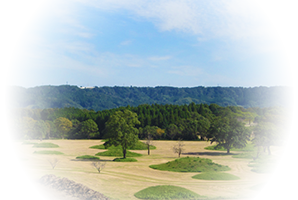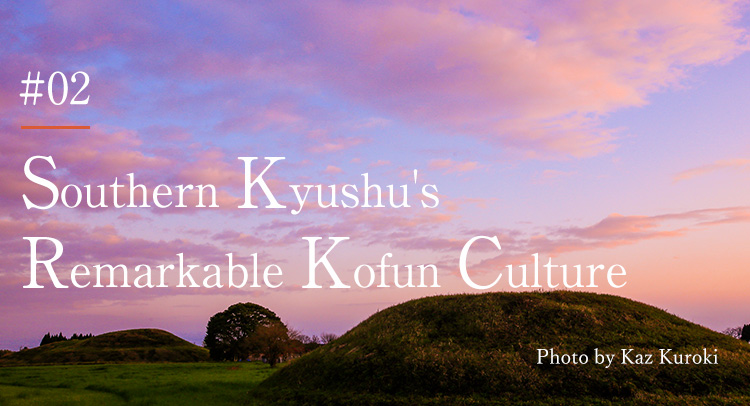Photo by Kaz Kuroki
Historical landscapes: Burial mound legacy extending to the present day
歴史的景観 ~今に残る古墳群~

歴史的景観 ~今に残る古墳群~

Saitobaru Kofun Group
Southern Kyushu is almost without parallel in Japan. It represents the coexistence of a universal kind of kofun culture that extended throughout the archipelago and a unique form of kofun culture rooted in the landscape of southern Kyushu, forming a historical landscape situated in rich natural surroundings that remains to this day.
Ikime Kofun Group (Miyazaki City), a series of gigantic burial mounds built in the 4th century; Saitobaru Kofun Group, gigantic kofun built during the first half of the 5th century; and Nyutabaru Kofun Group (Shintomi Town), a site that witnessed the emergence of new forms of regional restructuring during the latter half of the 5th and 6th centuries… These sites have all been excavated and preserved in the course of development work in the area, and their historical and cultural landscapes, including surrounding landscapes, have been carefully conserved.
Kofun groups like Mochida Kofun Group along with Tojin Kofun Group and Yokose Kofun on Osumi Peninsula have been undisturbed by development and because of this remain in a state of good preservation in an idyllic rural landscape. These kofun groups together with underground tunnel tombs and stone slab tombs such as the Shimauchi Underground Tunnel Tomb Group in Ebino City and a group of stone slab tombs at Arake Site give us a comprehensive picture of Kofun culture in Hyuga (southern Kyushu). This in turn enables us to enquire into the nature of the Kofun period as a whole.





